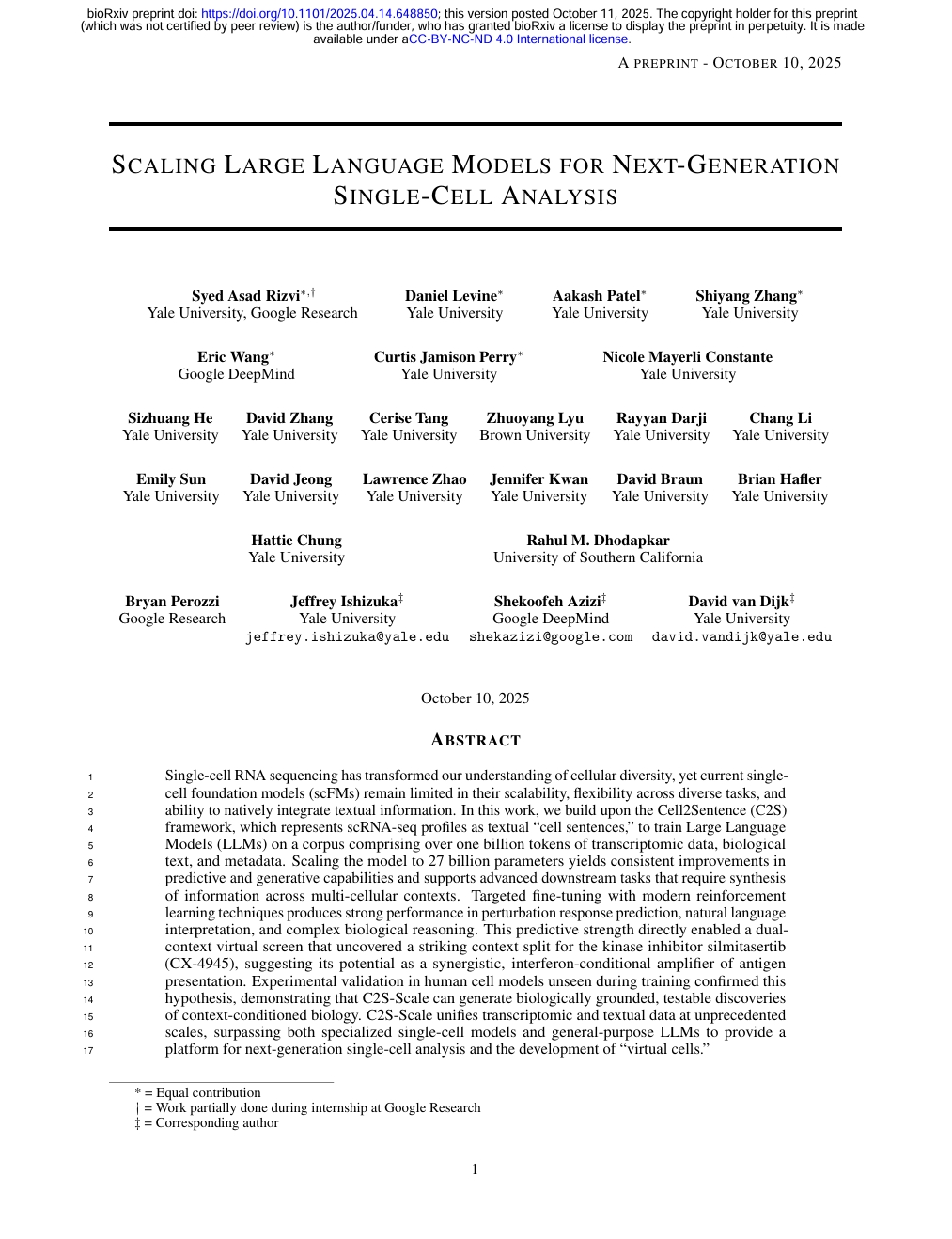Scaling Large Language Models for Next-Generation Single-Cell Analysis

Single-cell RNA sequencing has transformed our understanding of cellular diversity, yet current singlecell foundation models (scFMs) remain limited in their scalability, flexibility across diverse tasks, and ability to natively integrate textual information. In this work, we build upon the Cell2Sentence (C2S) framework, which represents scRNA-seq profiles as textual “cell sentences,” to train Large Language Models (LLMs) on a corpus comprising over one billion tokens of transcriptomic data, biological text, and metadata. Scaling the model to 27 billion parameters yields consistent improvements in predictive and generative capabilities and supports advanced downstream tasks that require synthesis of information across multi-cellular contexts. Targeted fine-tuning with modern reinforcement learning techniques produces strong performance in perturbation response prediction, natural language interpretation, and complex biological reasoning. This predictive strength directly enabled a dualcontext virtual screen that uncovered a striking context split for the kinase inhibitor silmitasertib (CX-4945), suggesting its potential as a synergistic, interferon-conditional amplifier of antigen presentation. Experimental validation in human cell models unseen during training confirmed this hypothesis, demonstrating that C2S-Scale can generate biologically grounded, testable discoveries of context-conditioned biology. C2S-Scale unifies transcriptomic and textual data at unprecedented scales, surpassing both specialized single-cell models and general-purpose LLMs to provide a platform for next-generation single-cell analysis and the development of “virtual cells.”